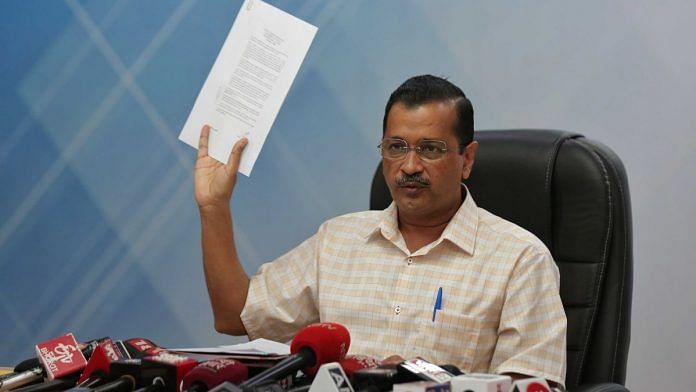Arvind Kejriwal’s leadership dominating the political scenario has pushed AAP to be that third choice that voters have always searched for. An evolving prototype of BJP in terms of redefining the Hindu narrative, freebie politics, or even cashing upon its ‘legitimate’ and dominant leadership, the Aam Aadmi Party has become a political eyesore for BJP in their home state.
In a rally in Dahod, Gujarat, while launching a desperate attack on BJP, the Punjab CM didn’t shy away from excitingly claiming that the AAP ‘broom could successfully sweep out the mud in which the lotus has bloomed.’ Mann dancing to the tunes of Garba and Kejriwal’s diktat while being in service for his party’s electioneering in the state has been dubbed as a ‘Nero’ leading a ‘headless-chicken’-like administration as the state deals with threats to internal security and an impending environmental crisis. The AAP showcases a Gujarat that emulates Punjab based on the Delhi model as a sparkling promise. Punjab is however burdened by an estimated 3.05 lakh crore debt that has augured its economy, especially in the wake of freebie politics of electricity, with a promise of free 300 units to all households in place since July, and regarding restoration of OPS (old pension system). Last June, the RBI bluntly indicated that a decline in state revenues and an additional burden of low subsidy rates has increased the central government’s debt.
Although during the Uttar Pradesh elections, freebie politics played an essential factor in making people vote for the BJP. The state hasn’t been efficiently able to evade socio-economic inequalities en masse. The Centre for the Study of Developing Societies Lokniti post-poll survey deduced that a majority of interviewed voters benefitted from funding from both central and state governments in UP, from policies like Kisan Samman Nidhi policy, Ujjwala Scheme, direct money transfers in banks, etc. Ironically, the MGNREGA being a welfare scheme didn’t work, as 58.3 per cent of the surveyed individuals never benefited from it, 42.1 per cent believe farmers’ conditions along with the timely payment of crops have only worsened during the last five years in the state.
About 64.4 per cent voters reported that the prices of essential commodities have only increased in addition to the unemployment in the state. The recent collapse of the Morbi Bridge has alienated the glory from the famous ‘Gujarat model’ in contrast to the Punjab or Delhi model, laying bare the degenerated administration quality in the state, a buck that can’t be easily passed over to luck or fate. After all, money wouldn’t bring back the lives of the deceased.
Also read: AAP is a lazy and guilt-free version of the BJP
Aam Aadmi narrative
What has always made the BJP different from other parties in India isn’t only its hyper-populist approach but also its religious narrative. I understand this as a feature of the party politics to not only define Hindutva as the driving force for the unity of the country but also as the way to ‘Hinduise’ the colonial narrative as a decolonial one. Kejriwal and his party members have been re-interpreting the importance of the same narrative of being an Indian. From Shaheen Bagh to the Ahmedabad Floggings, it has stayed silent on Muslims’ marginalisation. The ideology of deindividuation of an Indian citizen as an ‘Aam Aadmi,’ a little different from BJP’s stand has carefully wooed voters while hurting no one’s sentiments, at least directly.
From being tenaciously vocal on Kashmiri Pandits, call for printing deities on the national currency to countering Modi’s Ram-Avatara narrative with his Krishna-Avatara narrative, Kejriwal hasn’t labeled Muslims as unwanted, to avoid losing out on an Aam Aadmi support base, even when he makes the Gujaratis believe that the Hindus are special Aam Aadmis. He has diluted exceptionalism while intensifying his sanskari, dharm-oriented image with iotas of rationality and fact-figures in his speech. AAP self-simulating as a third option appears to be a safe anti-incumbent choice with a ‘non-ideological ideology’ Hinduising itself by supporting a majoritarian, non-secular outlook.
The author is a student at Panjab University. Views are personal.






